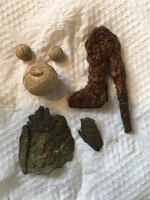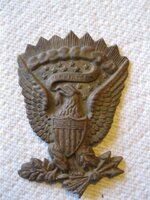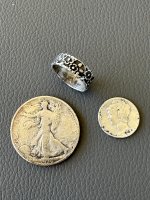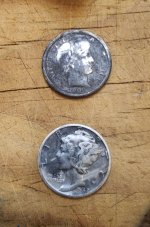ArDirtSlinger
Hero Member
Went out for a couple of hours yesterday and pulled these tidbits.

The mainspring is soaking in a Phosphoric acid solution and should clean up nicely.
The brass pieces I believe to be part of some sort of unit badge. Possibly similar to a Hardy hat emblem.
How do I go about cleaning it without losing any detail that is left. It has sunburst edges and a curved ribbon in the middle. Possibly letters on it. It is fairly thin so I need to be gentle. Also it looks to be stamped.

The mainspring is soaking in a Phosphoric acid solution and should clean up nicely.
The brass pieces I believe to be part of some sort of unit badge. Possibly similar to a Hardy hat emblem.
How do I go about cleaning it without losing any detail that is left. It has sunburst edges and a curved ribbon in the middle. Possibly letters on it. It is fairly thin so I need to be gentle. Also it looks to be stamped.
Amazon Forum Fav 👍
Upvote
4







